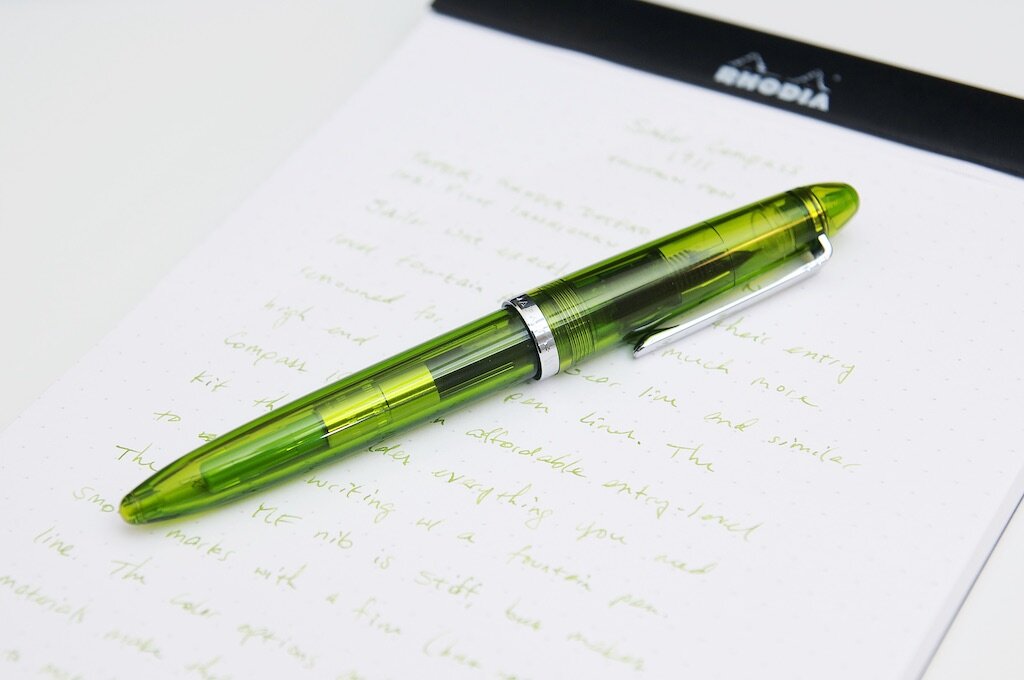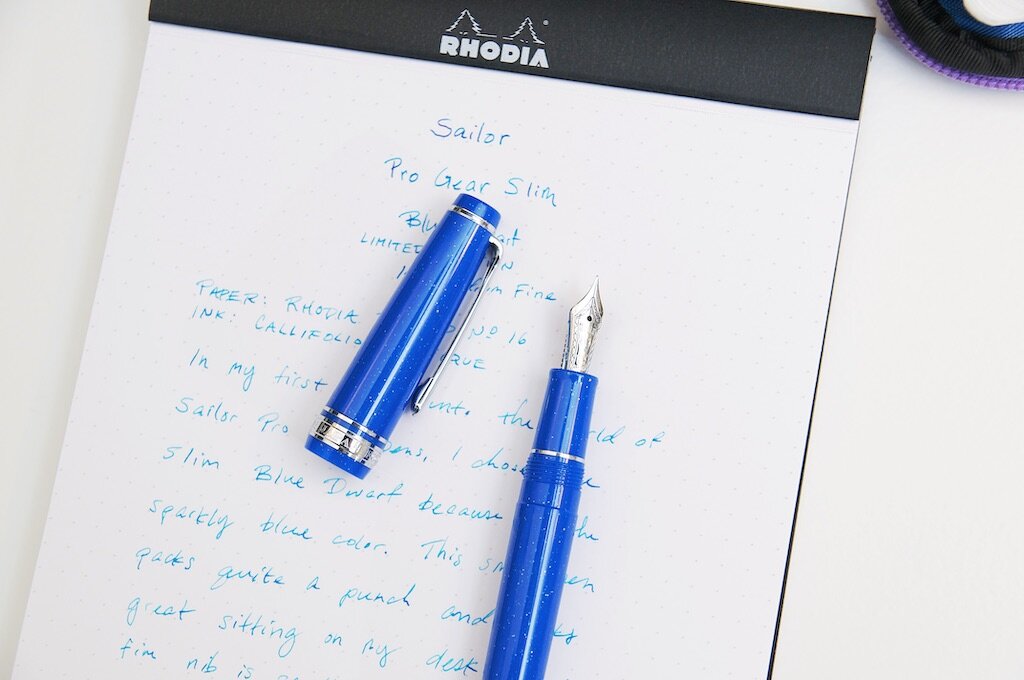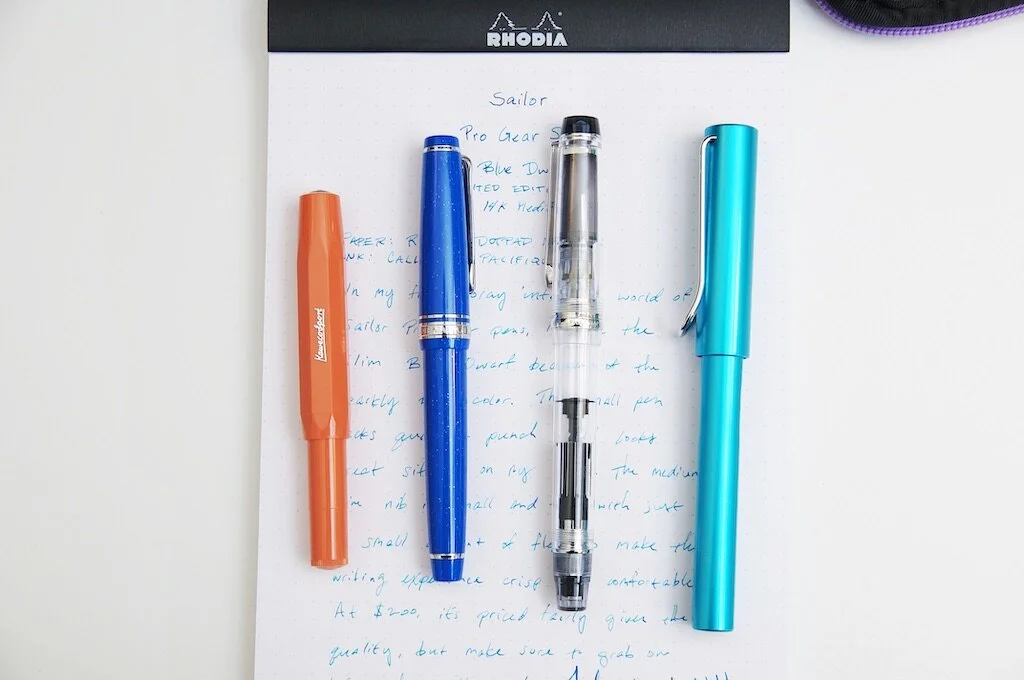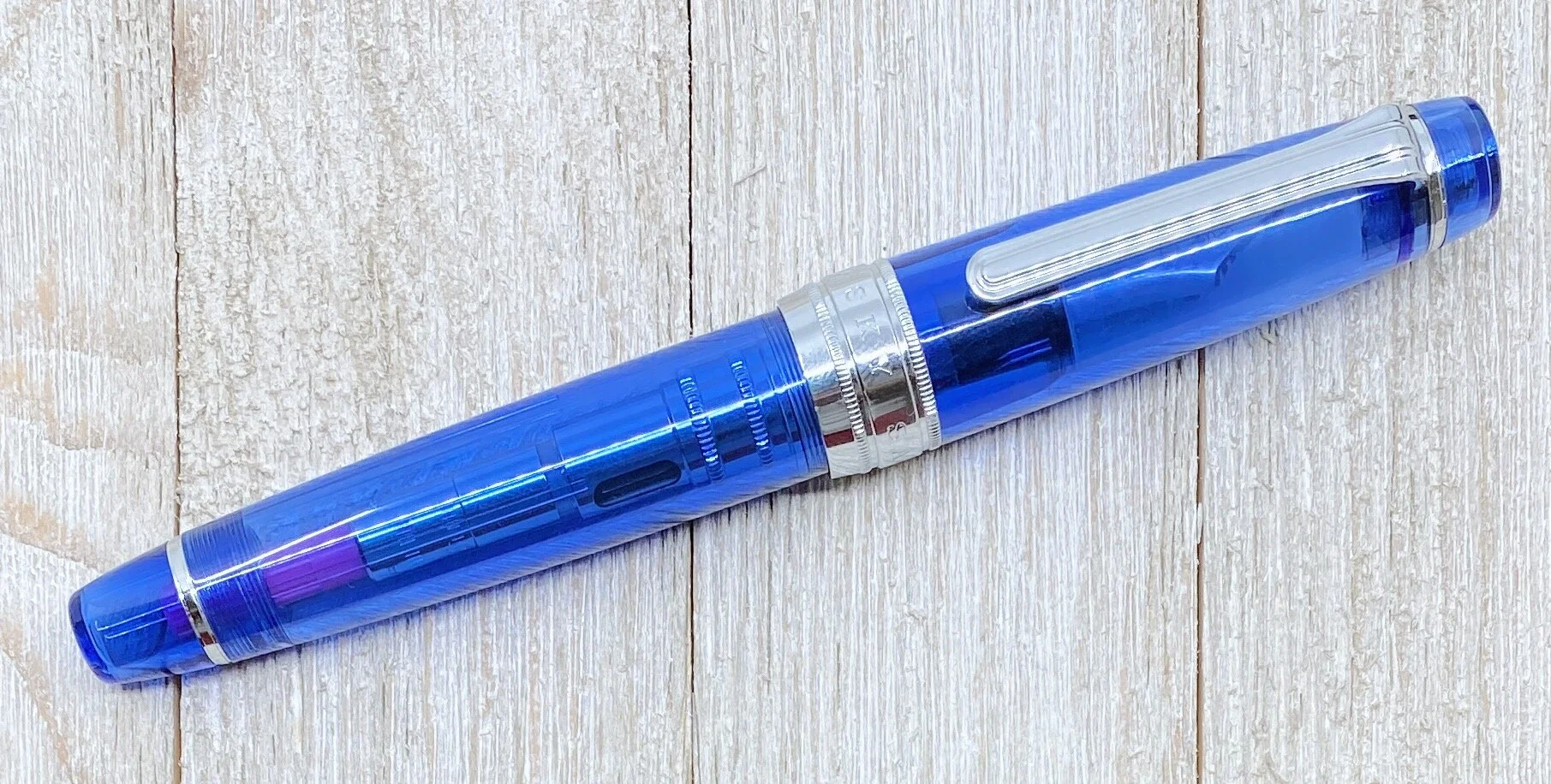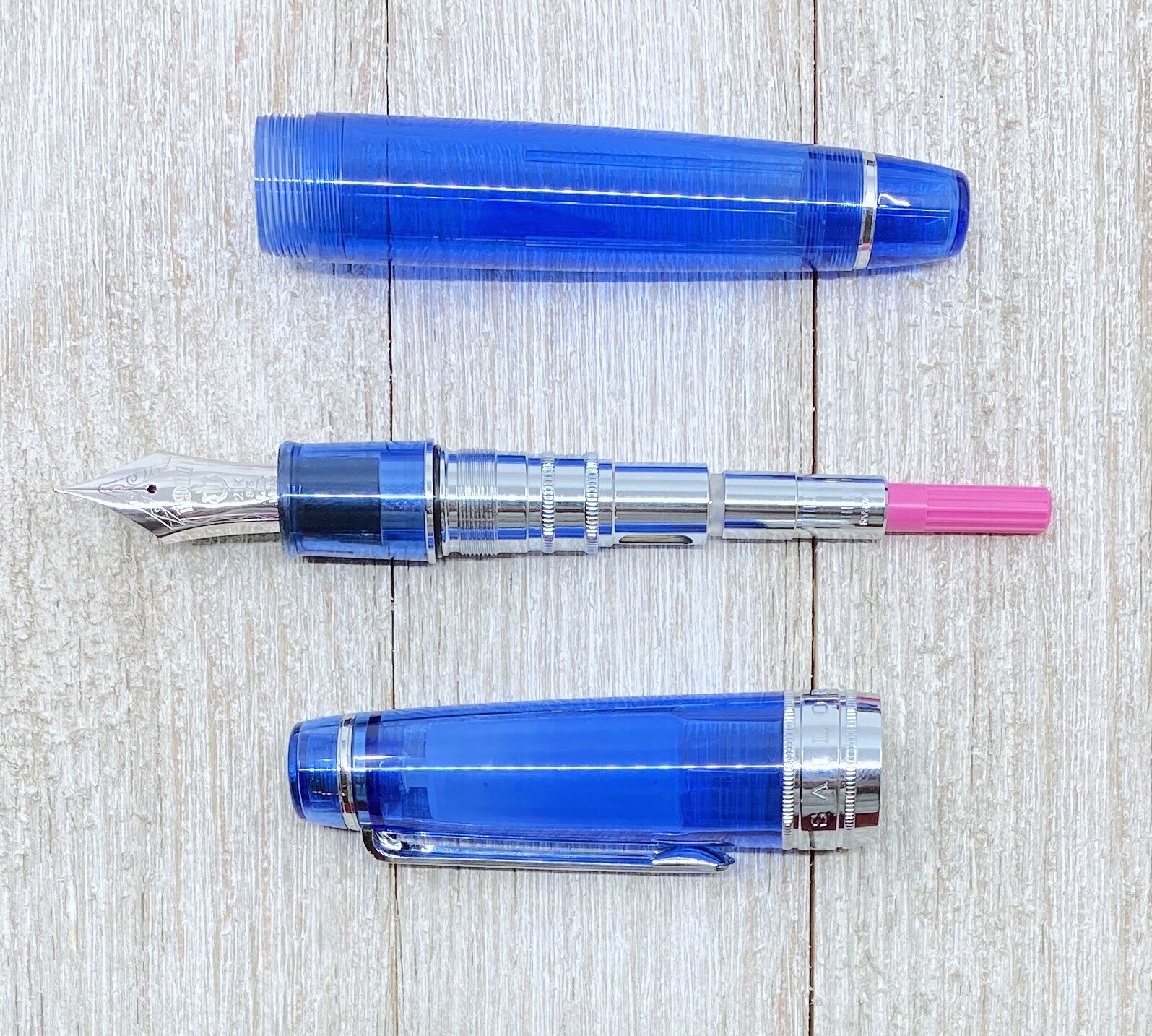(Jeff Abbott is a regular contributor at The Pen Addict. You can find more from Jeff online at Draft Evolution and Twitter.)
The sub-$100 price range can be difficult for a lot of pen manufacturers to succeed in. For some, this is where they excel at offering great value and excellent writing instruments for the price (ever heard of TWSBI?). On the other hand, being able to deliver high-end luxury writing instruments doesn't also make you an expert at delivering lower cost, affordable items that compete well with brands that operate exclusively in that space. That doesn't mean you shouldn't try, though! And that's exactly what Sailor is doing with the Compass 1911 fountain pen line.
The Compass 1911 borrows a familiar shape from the high-end 1911 fountain pen line, but uses more affordable materials in order to hit a much lower price bracket: $50 MSRP. On top of that, the Compass 1911 even comes with two black ink cartridges and (wait for it) a cartridge converter. I've definitely criticized Sailor in the past for not including a cheap converter with their $200+ fountain pens. At that price range, it seems petty to discount it from the hinged box that contains the pen. In the $50 price range, it's a fantastic bonus that I would never expect.
But the value gets better from there since no one really sells goods for the MSRP. As of now, you can find the Sailor Compass 1911 for just under $40 at Goldspot. For that price, is an excellent value for a beginning fountain pen kit. But, how does it perform as a pen? Can Sailor scale down their excellent writing to an ultra affordable, entry-level pen?
Across the lineup, the Compass 1911 feature semi-transparent materials in a variety of fun colors. The trim is silver in every case, and there also aren't any nib choices to make. Every pen comes with a stainless steel medium fine nib. While this is a bold decision, I certainly agree with this being a default option for a nib size. Others won't appreciate it and will look for larger or smaller alternatives, but for most people that don't really know what nib size to use yet, it's a pretty good starting point.
The pen is fairly lightweight, but doesn't feel brittle or delicate. It can definitely withstand some abuse from being thrown in bags and pockets. The screw-on cap posts securely to the back of the pen, and I find it extremely comfortable to write with the cap posted or non-posted. Both lengths are great for writing. In all, the materials used in the body and cap feel great for such an affordable pen. Even the converter seems well-made.
Moving on to the more important part of the pen, the nib is incredibly plain compared to Sailor's more expensive options. Even though it's plain and looks a little cheap, this nib is a solid performer. The MF nib is stiff as a nail and writes smoothly and reliably. It's always such a joy to ink up a pen straight out of the box and find that it writes beautifully without any fuss. The Sailor Compass 1911 is one of these pens, and an excellent first option for those that are curious about the world of fountain pens. I also enjoy that the material used for the feed is transparent as well, which shows off the ink color you've chosen. For my Olive version of the pen, I went with Pilot Iroshizuku Chiku-rin to compliment the light green transparent color of the body. The green feed just makes it even better.
To be honest, I wasn't sure what to expect when I opened this box. I've been disappointed in the past by some of Sailor's sub-$100 offerings, and I thought this might be another lackluster attempt to break into that price range. The Compass 1911 won't disrupt what TWSBI, Pilot, Lamy, Kaweco, or other brands that offer pens in the same price range are already doing, but it is a fantastic offering from the brand that directly translates what kind of quality and dependable writing experience you can expect from their more luxurious offerings. Here's to hoping they continue experimenting in this fun category.
The review unit featured here is the Olive color option, but you can also pick from Clear, Brown, Yellow, Green, Purple, Blue, Pink, and Red. At $40, they're a fantastic deal for a gift or a personal treat.
(Goldspot provided this product at no charge to The Pen Addict for review purposes.)
Enjoy reading The Pen Addict? Then consider becoming a member to receive additional weekly content, giveaways, and discounts in The Pen Addict shop. Plus, you support me and the site directly, for which I am very grateful.
Membership starts at just $5/month, with a discounted annual option available. To find out more about membership click here and join us!

